
Nymphoides, or floatingheart, is a genus of aquatic flowering plants in the family Menyanthaceae. The genus name refers to their resemblance to the water lily Nymphaea. Nymphoides are aquatic plants with submerged roots and floating leaves that hold the small flowers above the water surface. Flowers are sympetalous, most often divided into five lobes (petals). The petals are either yellow or white, and may be adorned with lateral wings or covered in small hairs. The inflorescence consists of either an umbellate cluster of flowers or a lax raceme, with internodes occurring between generally paired flowers.
Scrub oak is a common name for several species of small, shrubby oaks. It may refer to:
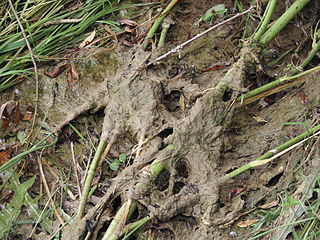
Didymosphenia geminata, commonly known as didymo or rock snot, is a species of diatom that produces nuisance growths in freshwater rivers and streams with consistently cold water temperatures and low nutrient levels. It is native to the northern hemisphere, and considered an invasive species in Australia, Argentina, New Zealand, and Chile. Even within its native range, it has taken on invasive characteristics since the 1980s. It is not considered a significant human health risk, but it can affect stream habitats and sources of food for fish and make recreational activities unpleasant. This microscopic alga can be spread in a single drop of water.

Florida sand pine scrub is an endangered subtropical forest ecoregion found throughout Florida in the United States. It is found on coastal and inland sand ridges and is characterized by an evergreen xeromorphic plant community dominated by shrubs and dwarf oaks. Because the low-nutrient sandy soils do not retain moisture, the ecosystem is effectively an arid one. Wildfires infrequently occur in the Florida scrub. Most of the annual rainfall falls in summer. It is endangered by residential, commercial and agricultural development, with the largest remaining block in and around the Ocala National Forest. Lake Wales Ridge National Wildlife Refuge also holds a high proportion of remaining scrub habitat, while the Archbold Biological Station near Lake Placid contains about 20 km2 (7.7 sq mi) of scrub habitat and sponsors biological research on it.
The genus name Dipladenia or the common name dipladenia can refer to several flowering plants:

Solenopsis geminata or tropical fire ant is a species of fire ants, described by Fabricius in 1804, in the tribe Solenopsidini; it was originally placed in the Atta genus. This species has a pan-tropical distribution.

Geissorhiza is a genus with 103 species described to date of deciduous perennial flowering plants in the family Iridaceae first described as a genus in 1803. The entire genus is endemic to Cape Province of western South Africa. The genus name is derived from the Greek words geisson, meaning "tile", and rhizon, meaning "root".
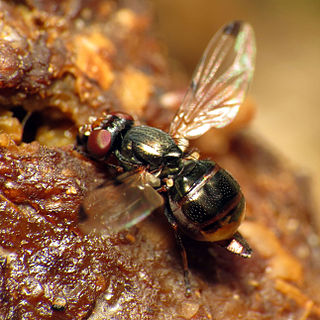
Euxesta is a genus of picture-winged flies in the family Ulidiidae.
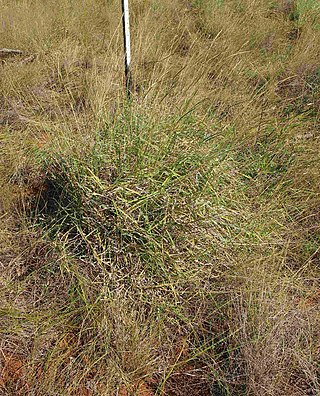
Mnesithea, or jointtail grass, is a genus of Asian, Australian, and Pacific Island plants in the grass family.
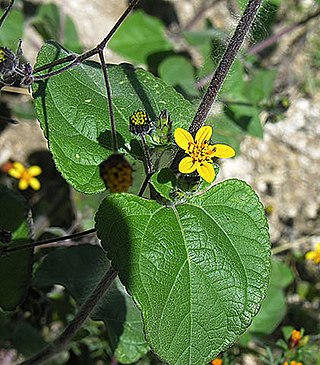
Baltimora is a genus of flowering plants in the family Asteraceae.
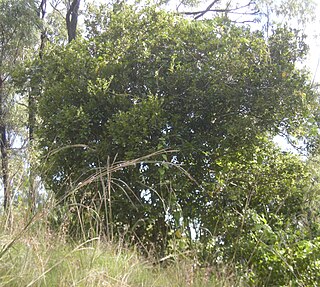
Diospyros geminata is a small tree or shrub of dry rainforest, gallery forest and sub tropical rainforest of Australia and New Guinea.

Quercus geminata, commonly called sand live oak, is an evergreen oak tree native to the coastal regions of the subtropical southeastern United States, along the Atlantic Coast from southern Florida northward to southeastern Virginia and along the Gulf Coast westward to southern Mississippi, on seacoast dunes and on white sands in evergreen oak scrubs.
Mattesia is a genus of parasitic alveolates of the phylum Apicomplexa. Species in this genus infect insects.
Solanum tepuiense is a plant species native to Venezuela. It is known from one collection, from a low-elevation sandstone flat-topped mountain named Sororopán-Tepuí, near the Gran Sabana Region in the State of Bolívar in the eastern part of the country.

Rhabdadenia is a genus of plant in the family Apocynaceae first described as a genus in 1860. It is native to South America, Central America, southern Mexico, the West Indies, and Florida.
- Rhabdadenia barbata(Desv. ex Ham.) Miers = Pentalinon luteum(L.) B.F.Hansen & Wunderlin
- Rhabdadenia berteroi(A.DC.) Müll.Arg. = Angadenia berteroi(A.DC.) Miers
- Rhabdadenia campestris(Vell.) Miers = Mandevilla hirsuta(Rich.) K.Schum.
- Rhabdadenia corallicolaSmall = Angadenia berteroi(A.DC.) Miers
- Rhabdadenia cubensisMüll.Arg. = Angadenia berteroi(A.DC.) Miers
- Rhabdadenia laxifloraMiers = Pentalinon luteum(L.) B.F.Hansen & Wunderlin
- Rhabdadenia lindenianaMüll.Arg. = Angadenia lindeniana(Müll.Arg.) Miers
- Rhabdadenia lucidaMiers = Odontadenia nitida(Vahl) Müll.Arg.
- Rhabdadenia polyneuraUrb = Odontadenia polyneura(Urb.) Woodson
- Rhabdadenia sagrae(A.DC.) Müll.Arg. ex Griseb. = Angadenia berteroi(A.DC.) Miers
- Rhabdadenia wrightianaMüll.Arg. = Neobracea valenzuelana(A.Rich.) Urb.
Angadenia is a genus of plants in the family Apocynaceae first described as a genus in 1878. It is native to Florida and the West Indies.
- Angadenia berteroi(A.DC.) Miers - Florida, Bahamas, Cuba, Hispaniola, Turks & Caicos Islands
- Angadenia lindeniana(Müll.Arg.) Miers - Cuba, Hispaniola, Jamaica

Nymphoides geminata, commonly known as entire marshwort, is an aquatic plant of the family Menyanthaceae native to eastern Australia.

Odontadenia macrantha is a vine of the family Apocynaceae native to Central and South America.
Stephanodaphne is a genus of flowering plants belonging to the family Thymelaeaceae.












